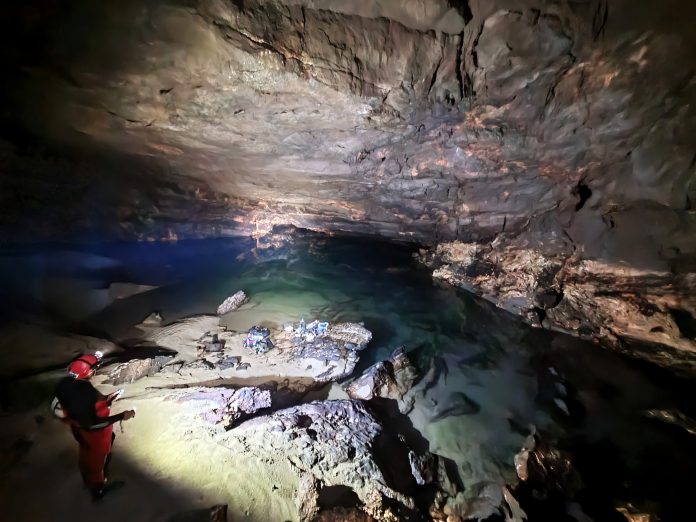by Alessandra Ressa
Trieste’s Timavo river has unveiled yet another wonder in the depths of its mysterious underground path. 160 meters long, 50 meters wide and 60 meters high, the new cave, connected to the 350-meter deep Trebiciano Abyss by an underground lake and a series of narrow water-saturated tunnels, was discovered last week by Società Adriatica di Speleologia.
The water investigation and exploration were carried forward by a team of French cave divers of FFESSM–Fédération française d’Etudes et de Sports sous-marins. The joint French and S.A.S. Speleologists teams have been working for almost nine years in the Timavo System Exploration project to shed light on the little-known underground journey of this fascinating river that has intrigued researchers since the earliest cave explorations in Trieste almost two centuries ago.

Marco Restaino, 39, an expert Triestino speleologist and president of Società Adriatica di Speleologia, is thrilled about the results of the discovery which he defines “simply amazing”.
“Speleologists have been literally trying to unveil the secrets of this mysterious river for almost two centuries” he explained. “It is no coincidence that Trieste is where speleology first began with the discovery of the Trebiciano Abyss in 1841 by famous explorer Antonio Lindner. This natural 330-meter, narrow, vertical drop that connects Carso to the underground path of Timavo is today a challenging door to the river. Since the first cave and underground lake at the bottom of the abyss were discovered, the quest for pathways along the Timavo have been investigated consistently, but often with little results”.
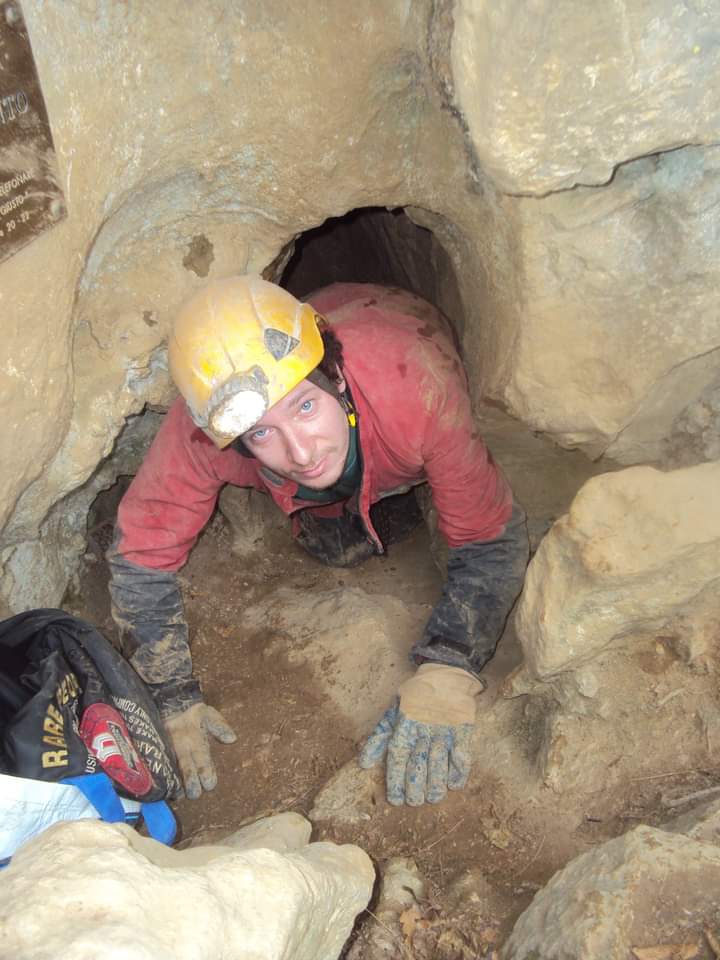
You coordinated the latest underground and underwater explorations which led to this amazing discovery. How were you able to direct the six French cave divers who participated in the expedition?
“We knew there was a big cave underneath Reka/Fiume sinkhole in Trebiciano because the Timavo river, during its tumultuous underground journey to Duino, runs through spaces filled with air. When the water level rises the air is quickly and often violently expelled from these breathing holes. We had noticed that in one particular sinkhole, not far from the access to the abyss, the air that was pushed out by the water was particularly strong, reaching at some point a speed of 150 kilometers an hour. It is scientifically possible to estimate the size of a cave by measuring the amount of air expelled, and that is exactly what we did, we calculated not only the size of the cave but its position as well. We were then able to direct the cave divers who managed to find the correct passages through the narrow and dangerous underwater tunnels”.
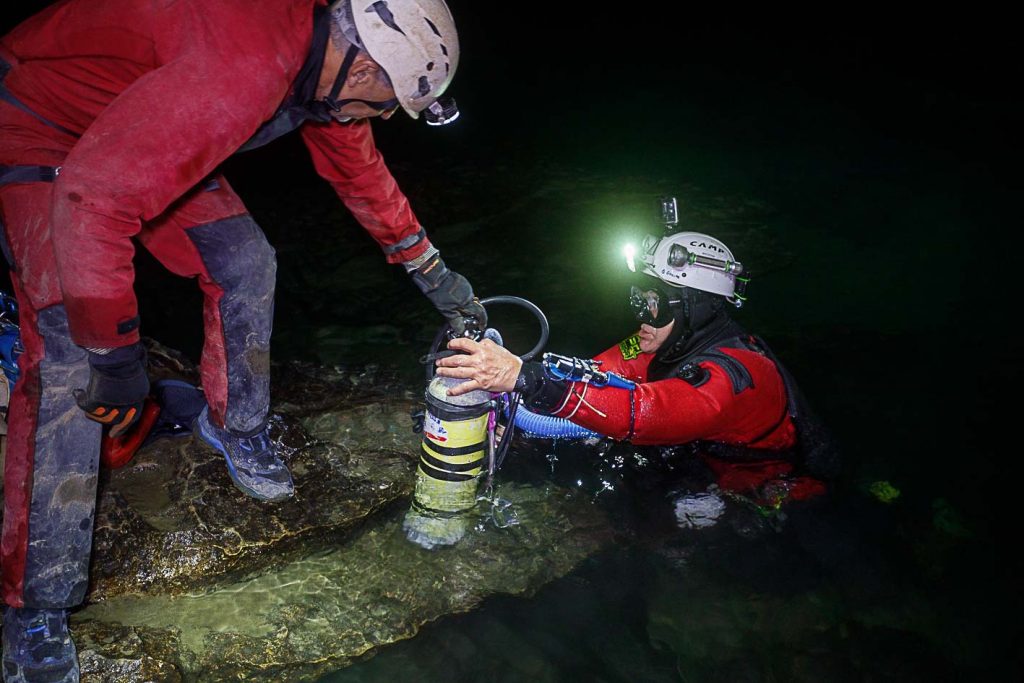
What were the challenges that you encountered during the explorations? What are the dangers for the people involved?
“The identification of the correct passages, after years of attempts, was possible thanks to the persistent lack of rain which has sadly characterized this extremely dry summer. This, in turn, allowed for the Timavo water to be particularly calm and clear, its visibility with special underwater flashlights being 5 meters these days, much more than the usual 1-meter. The drought, however, did pose a challenge because, as there was almost no water current, it was very difficult for the divers to follow the river and identify its direction, and they often found themselves at dead ends. Cave diving remains one of the most dangerous activities. You are underwater, often in narrow tunnels, surrounded by rock. If something goes wrong, you can’t simply reach the surface. In addition, more often than not there isn’t enough space to turn around, but you have to trace your steps backward in complete darkness… You can very well imagine how easy it is to panic in such situations. Even with flashlights, you can’t see much in an underwater cave. If that isn’t enough, unlike other extreme activities, cave diving is mostly encouraged to be practiced individually. This is to avoid, in case of emergency, for other divers to risk their lives in the attempt of rescuing their friends.”
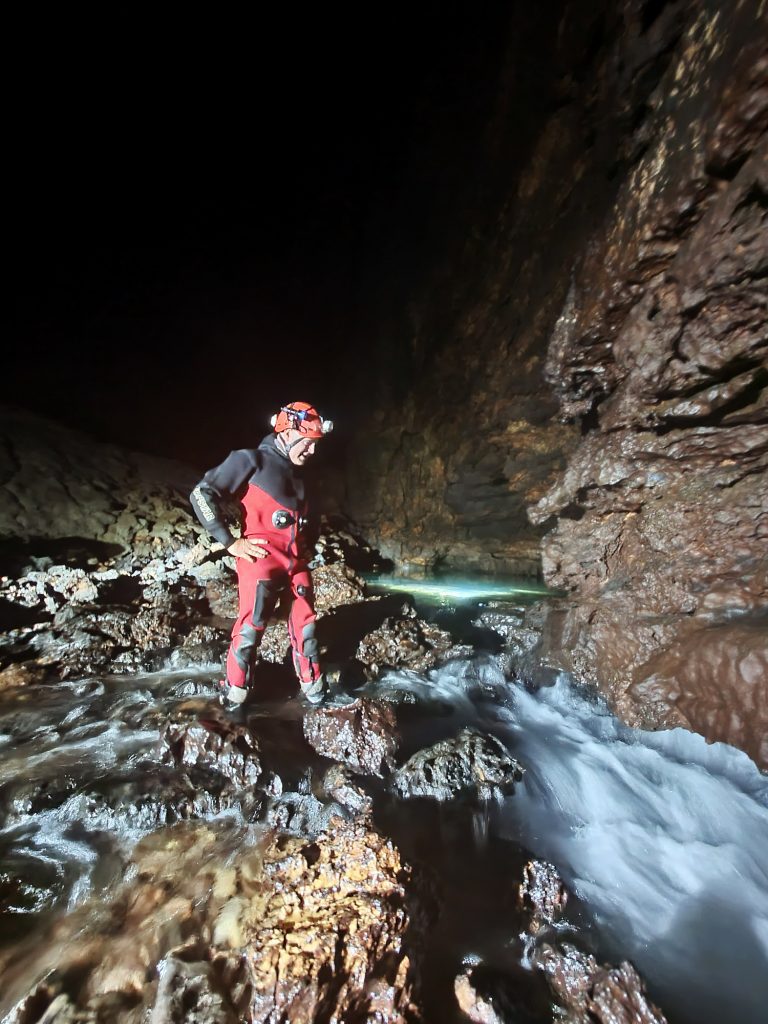
The explorations took days. How did you manage to provide the divers with all of the equipment they needed at that depth?
“The biggest challenge was probably assisting our six divers and constantly providing them with oxygen tanks, equipment, food, and so on. Being the access to the passage 350 meters deep, teams of speleologists from S.A.S., as well as from C.A.I. XXX Ottobre Gruppo Grotte and several other speleo clubs in town worked incessantly for days, climbing the 350-meter long passage made of dozens of vertical metal ladders up and down the Trebiciano abyss while carrying the equipment on their shoulders, a load between 15 and 20 kilos for each volunteer. The way up was particularly hard… Approximately fifty people helped for this particular exploration.”
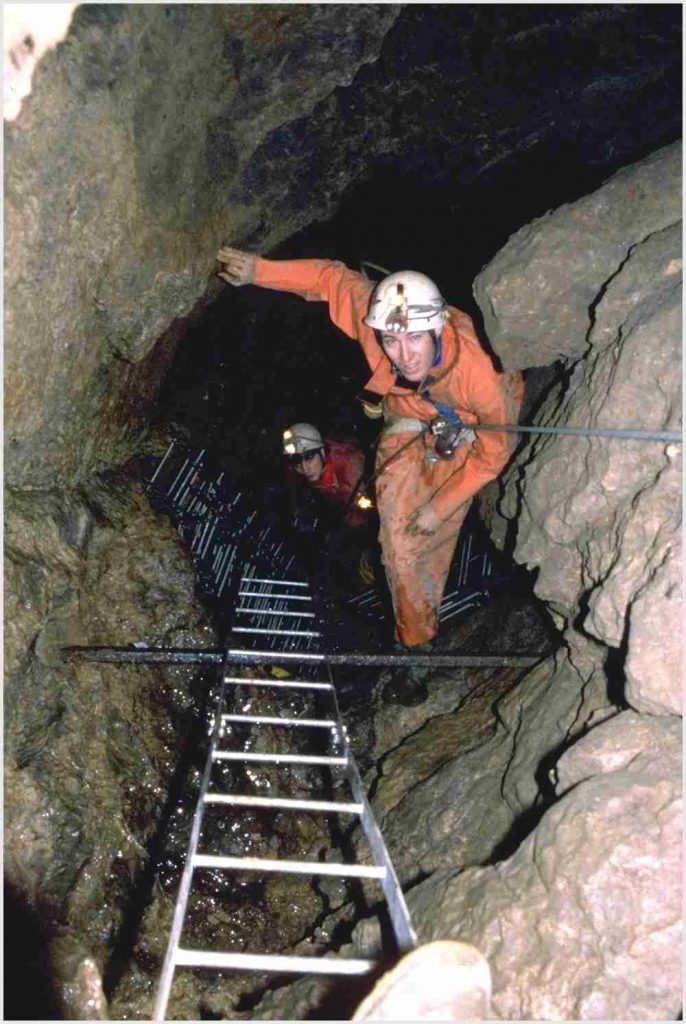
Why are French cave divers so interested in Trieste’s Timavo?
“I think the mysteries of Timavo are appealing to all speleologists, but the current collaboration was probably the result of a happy coincidence, when in 1993 a group of French cave divers first explored the lake in the Trebiciano Abyss. When, in 2013, during our own investigations, we asked for their 20-year old findings (they had none), they suggested a joint project which also resulted in two professional documentaries.”
Is the exploration going to continue?
“The joint project is going to continue because we know there is another cave, approximately 300 meters away, and we are currently digging to find a passage from above. Meanwhile, our French partners are organizing the next expedition to connect the third cave through the waters”.
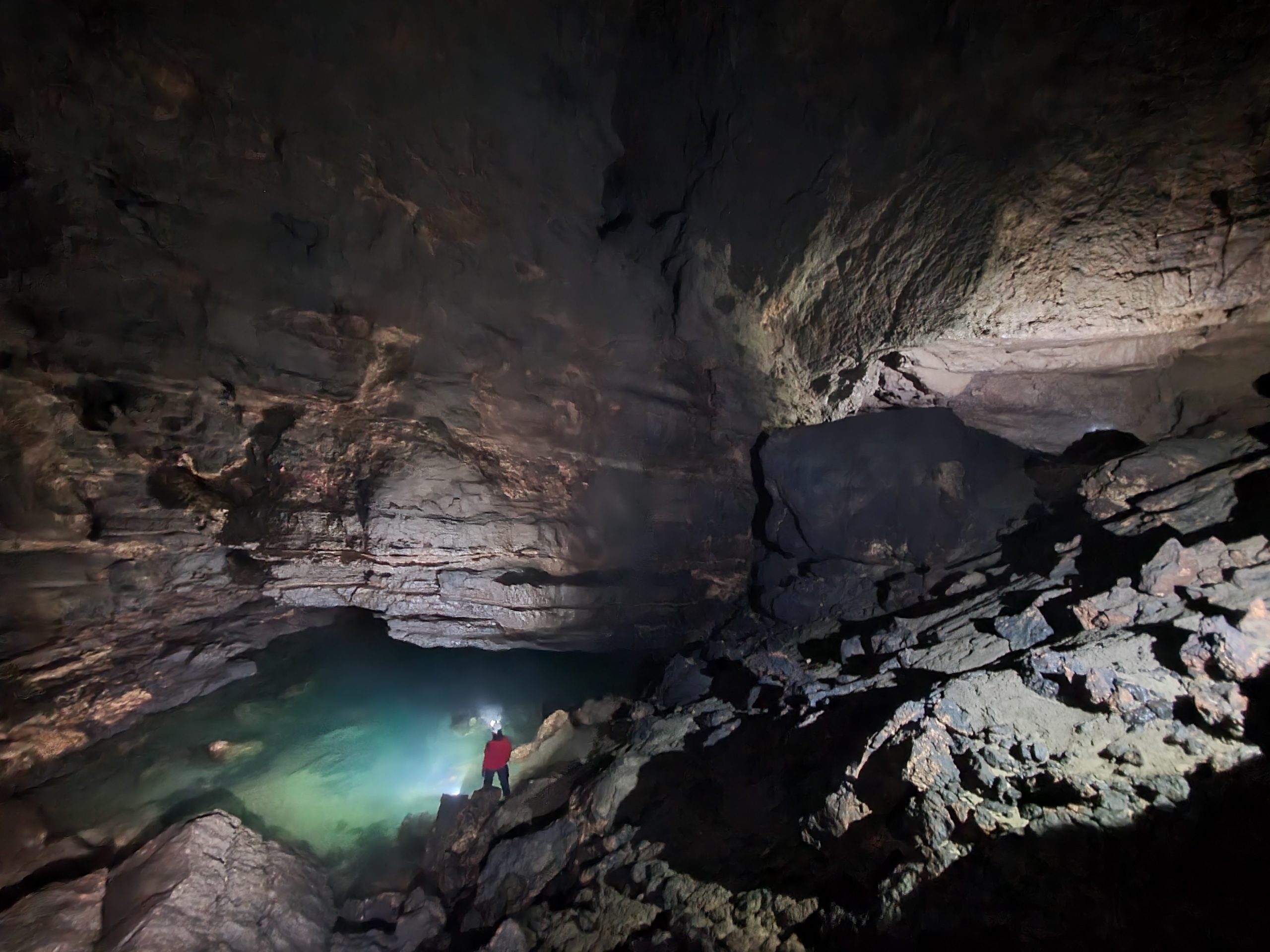
Unfortunately, because of their conformation, these caves remain inaccessible to most people. Only the privileged, courageous few with enough cave training are able to witness the beauty and mysteries of the underground Timavo, also known as the ghost river, because of its ability to unpredictably emerge and disappear in the bowels of Carso. And there are good news for social networks addicts! Following the latest discovery, S.A.S. speleologists have installed a Wi-Fi station at the bottom of the Trebiciano Abyss. Never before has your chance of sharing selfies in real time reached so far deep into Earth.

























